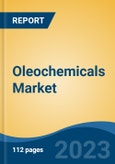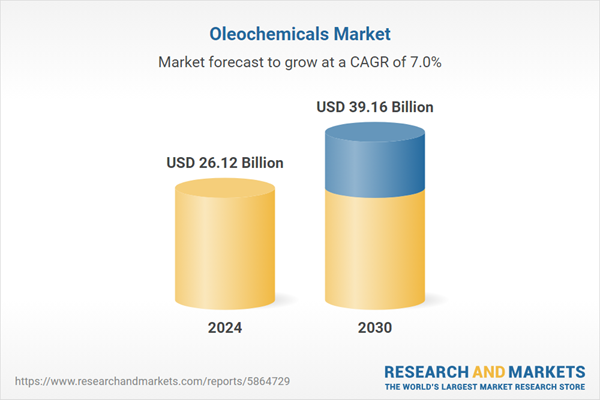Speak directly to the analyst to clarify any post sales queries you may have.
10% Free customizationThis report comes with 10% free customization, enabling you to add data that meets your specific business needs.
This market’s long-term growth outlook remains solid, supported by its strategic alignment with international sustainability targets, wide-ranging application potential, and escalating consumer preference for natural and environmentally responsible ingredients.
Key Market Drivers
Expanding Applications Across Diverse End-Use Industries
The expansion of applications across diverse end-use industries is a critical driver propelling the growth of the Global Oleochemicals Market. Oleochemicals’ inherent versatility and bio-based nature make them highly adaptable to a wide range of sectors, significantly broadening their market potential.In the personal care and cosmetics industry, oleochemicals such as fatty acids, glycerol esters, and fatty alcohols are essential ingredients in formulations for skincare, haircare, and cosmetic products. Their natural origin, biodegradability, and skin-friendly properties align with consumer demand for clean-label and sustainable products, driving increased incorporation of oleochemicals in this segment.
Within the food and beverage sector, oleochemicals serve as emulsifiers, stabilizers, and preservatives, enhancing product quality and shelf life. Their acceptance as safe, natural additives complements the growing global trend toward minimally processed and health-conscious food products, encouraging manufacturers to adopt oleochemical ingredients.
In the detergents and cleaning products industry, oleochemicals function as surfactants and emulsifiers, providing effective cleaning performance while meeting environmental regulations aimed at reducing chemical toxicity and improving biodegradability. As governments enforce stricter standards on household and industrial cleaners, the demand for oleochemical-based formulations escalates.
The pharmaceutical sector also contributes to market growth, utilizing oleochemicals as excipients, emulsifiers, and drug delivery agents. The bio-based and non-toxic profile of these compounds supports the development of safer, more sustainable pharmaceutical products.
Industrial applications such as lubricants, plasticizers, coatings, and agrochemicals are increasingly adopting oleochemicals due to regulatory pressures and the shift toward sustainable manufacturing practices. Oleochemicals offer eco-friendly alternatives that reduce dependence on fossil fuel-derived chemicals, supporting manufacturers in meeting sustainability targets.
Technological advancements are enabling the development of specialized oleochemical derivatives tailored for emerging applications, further expanding their use across novel industries.
This broadening of application horizons not only diversifies demand sources but also enhances market resilience against sector-specific fluctuations. Consequently, the growing adoption of oleochemicals across multiple end-use industries serves as a significant catalyst for sustained market growth and long-term expansion in the global oleochemicals market.
Key Market Challenges
Raw Material Price Volatility and Supply Chain Risks
A significant challenge for the oleochemicals market is the fluctuation in prices and availability of primary feedstocks such as palm oil, soybean oil, and coconut oil. These raw materials are heavily influenced by factors including climate change, geopolitical tensions, trade policies, and agricultural yield variations. Price volatility increases production costs and can disrupt supply chains, making it difficult for manufacturers to maintain stable pricing and meet demand consistently. Additionally, concerns over the sustainability and ethical sourcing of some raw materials, particularly palm oil, have led to supply chain scrutiny and regulatory challenges.Key Market Trends
Integration of Circular Economy Principles and Sustainable Sourcing
A prominent trend influencing the oleochemicals market is the increasing adoption of circular economy frameworks focused on sustainability and waste reduction. Manufacturers are prioritizing the use of sustainably sourced raw materials, such as certified palm oil and by-products from other agricultural processes, to minimize environmental impact. This shift is supported by stricter sustainability standards and growing consumer demand for traceability and ethical sourcing. Companies investing in transparent supply chains and lifecycle assessments gain a competitive edge by aligning with global decarbonization goals and enhancing brand credibility.Key Market Players
- Vantage Specialty Chemicals, Inc.
- Emery Oleochemicals
- Evonik Industries AG
- Wilmar International Ltd
- Kao Chemicals Global
- Ecogreen Oleochemicals
- Corbion NV
- Cargill, Incorporated
- Oleon NV
- Godrej Industries Group
Report Scope:
In this report, the Global Oleochemicals Market has been segmented into the following categories, in addition to the industry trends which have also been detailed below:Oleochemicals Market, By Product:
- Specialty Esters
- Fatty Acid Methyl Ester
- Glycerol Esters
- Alkoxylates
- Fatty Amines
- Other
Oleochemicals Market, By Application:
- Personal Care & Cosmetics
- Consumer Goods
- Food Processing
- Textiles
- Paints & Inks
- Industrial
- Healthcare & Pharmaceuticals
- Polymer & Plastic Additives
- Other
Oleochemicals Market, By Region:
- North America
- United States
- Canada
- Mexico
- Europe
- France
- United Kingdom
- Italy
- Germany
- Spain
- Asia-Pacific
- China
- India
- Japan
- Australia
- South Korea
- South America
- Brazil
- Argentina
- Colombia
- Middle East & Africa
- South Africa
- Saudi Arabia
- UAE
Competitive Landscape
Company Profiles: Detailed analysis of the major companies present in the Global Oleochemicals Market.Available Customizations:
With the given market data, the publisher offers customizations according to a company's specific needs. The following customization options are available for the report.Company Information
- Detailed analysis and profiling of additional market players (up to five).
This product will be delivered within 1-3 business days.
Table of Contents
Companies Mentioned
The leading companies profiled in this Oleochemicals market report include:- Vantage Specialty Chemicals, Inc.
- Emery Oleochemicals
- Evonik Industries AG
- Wilmar International Ltd
- Kao Chemicals Global
- Ecogreen Oleochemicals
- Corbion NV
- Cargill, Incorporated
- Oleon NV
- Godrej Industries Group
Table Information
| Report Attribute | Details |
|---|---|
| No. of Pages | 180 |
| Published | September 2025 |
| Forecast Period | 2024 - 2030 |
| Estimated Market Value ( USD | $ 26.12 Billion |
| Forecasted Market Value ( USD | $ 39.16 Billion |
| Compound Annual Growth Rate | 6.9% |
| Regions Covered | Global |
| No. of Companies Mentioned | 11 |









